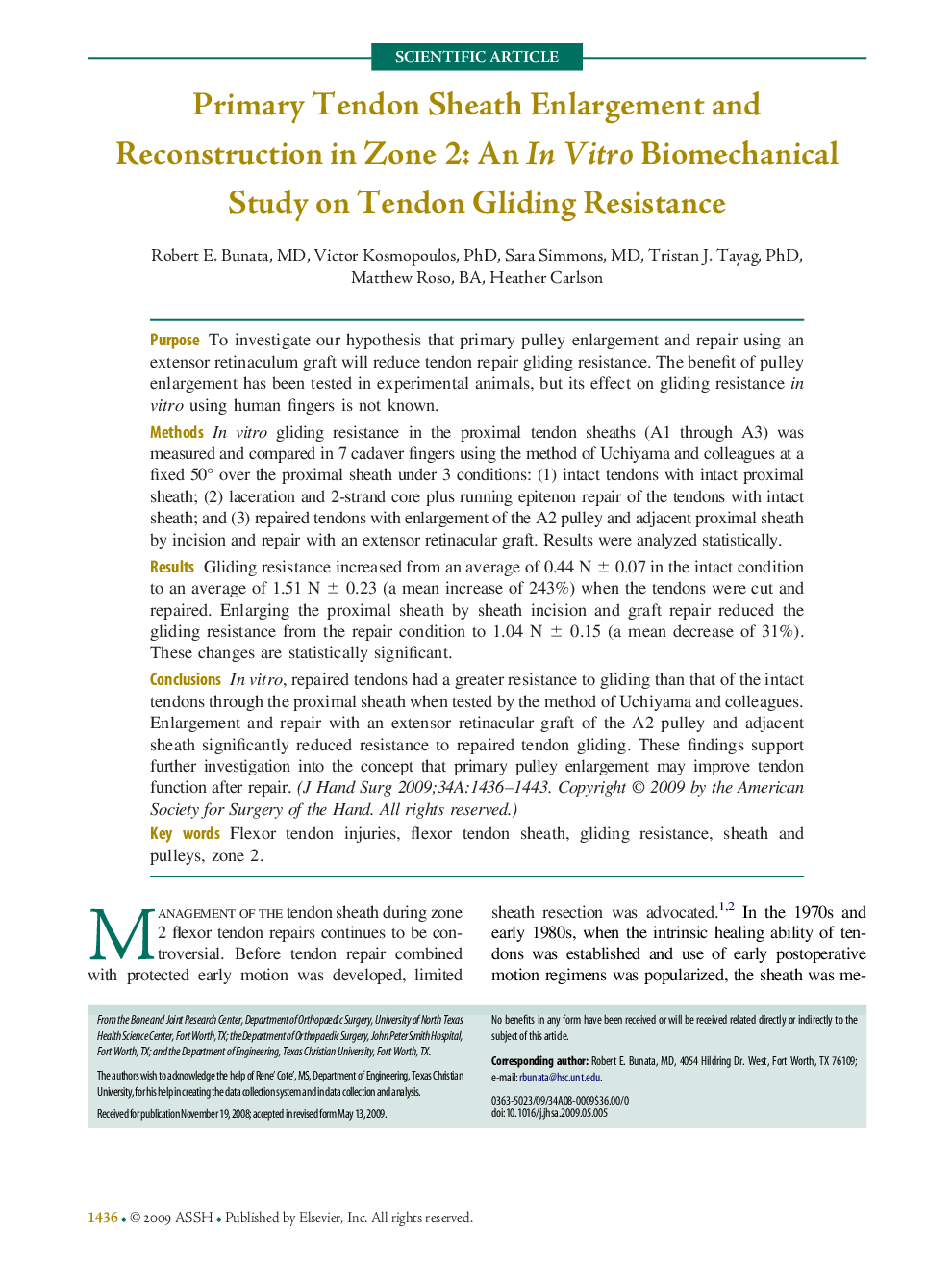| Article ID | Journal | Published Year | Pages | File Type |
|---|---|---|---|---|
| 4071325 | The Journal of Hand Surgery | 2009 | 8 Pages |
PurposeTo investigate our hypothesis that primary pulley enlargement and repair using an extensor retinaculum graft will reduce tendon repair gliding resistance. The benefit of pulley enlargement has been tested in experimental animals, but its effect on gliding resistance in vitro using human fingers is not known.MethodsIn vitro gliding resistance in the proximal tendon sheaths (A1 through A3) was measured and compared in 7 cadaver fingers using the method of Uchiyama and colleagues at a fixed 50° over the proximal sheath under 3 conditions: (1) intact tendons with intact proximal sheath; (2) laceration and 2-strand core plus running epitenon repair of the tendons with intact sheath; and (3) repaired tendons with enlargement of the A2 pulley and adjacent proximal sheath by incision and repair with an extensor retinacular graft. Results were analyzed statistically.ResultsGliding resistance increased from an average of 0.44 N ± 0.07 in the intact condition to an average of 1.51 N ± 0.23 (a mean increase of 243%) when the tendons were cut and repaired. Enlarging the proximal sheath by sheath incision and graft repair reduced the gliding resistance from the repair condition to 1.04 N ± 0.15 (a mean decrease of 31%). These changes are statistically significant.ConclusionsIn vitro, repaired tendons had a greater resistance to gliding than that of the intact tendons through the proximal sheath when tested by the method of Uchiyama and colleagues. Enlargement and repair with an extensor retinacular graft of the A2 pulley and adjacent sheath significantly reduced resistance to repaired tendon gliding. These findings support further investigation into the concept that primary pulley enlargement may improve tendon function after repair.
